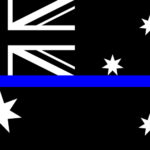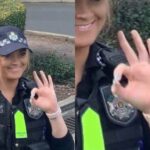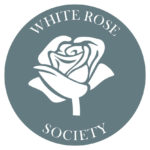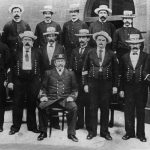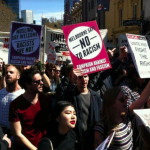Calls on Police Minister to Curb Officers Flaunting Insignia Linked to White Supremacy
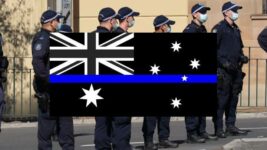
Reports of police officers wearing symbols associated with white supremacy or being captured on camera making symbols conveying the same racist message, have been increasing throughout a number of Australian jurisdictions over the past couple of years.
The initial report involved Victoria police senior constable Travis Gray gesturing the “OK” hand signal to climate protesters at Melbourne’s IMARC meeting in October 2019. And while he denied knowledge of its racist overtones, subsequent perusal of his Facebook account spoke otherwise.
Then there are the multiple reports of officers wearing thin blue line patches. A US invention, this symbol involves a flag dissected by a thin blue line, symbolising police protecting society. The first report of such a badge being worn by a local police officer arose in Queensland in September 2020.
Both these symbols were co-opted by various far-right groups overseas in 2017. And despite press coverage, reports of officers making the white supremacist hand gesture or having the flag displayed on their uniform continues to rise in this country.
The NSW Council for Civil Liberties last week wrote to NSW police minister David Elliott and police commissioner Mick Fuller, condemning the practice, especially as the force’s management is well aware that it’s taking place, and yet, it hasn’t been stamped out.
Far-right rising
NSWCCL president Pauline Wright stated in the 6 October dated letter that legal observers have recently witnessed a NSW police officer in Redfern and another at Hyde Park displaying the thin blue line insignia on their uniform. And two photos were provided as evidence.
“Over the past couple of years, our members have observed, consistent with increasingly frequent media reports, NSW police officers displaying symbols and icons associated with white supremacy,” the letter reads.
Wright then asserts that the national dialogue on far-right white supremacist groups has come to the point that it’s now understood these elements pose “an increasing threat to Australian national security”, and the work of intelligence agencies increasingly involves their investigation.
Indeed, ASIO boss Mike Burgess told a budget estimates hearing in October last year that investigating “extreme right-wing individuals” today constitutes 30 to 40 percent of the nation’s chief domestic spying agency’s workload.
“Many of these groups and individuals have seized on COVID-19, believing it reinforces the narratives and conspiracies at the core of their ideologies,” Burgess continued.
“They see the pandemic as proof of the failure of globalisation, multiculturalism and democracy, and confirmation that societal collapse and a ‘race war’ are inevitable.”
What action taken?
As Wright points out, the NSW Police Force Statement of Values maintains that officers should be treating all members of the public “respectfully and equally”. And the displaying of white supremacist symbols serves to undermine public trust in police.
NSWCCL has asked the minister and the commissioner to outline what sort of polices are in place to respond to officers who are found to be expressing their allegiance to white supremacist ideologies, and what steps are being taken to ensure this doesn’t continue.
Wright concluded that her organisation will be monitoring this situation going forward. And she warned that it might be a matter that the state’s sole police watchdog the Law Enforcement Conduct Commission (LECC) may need to be alerted to.


